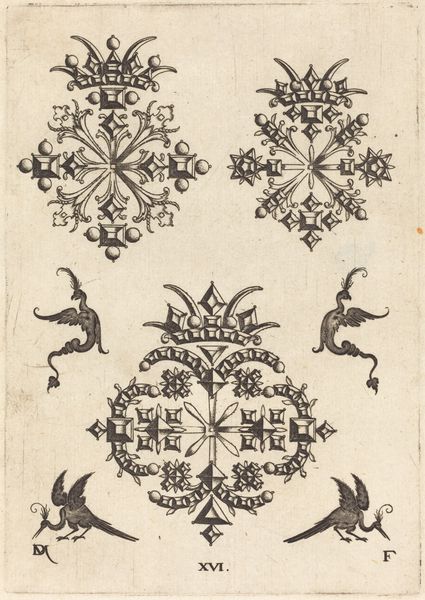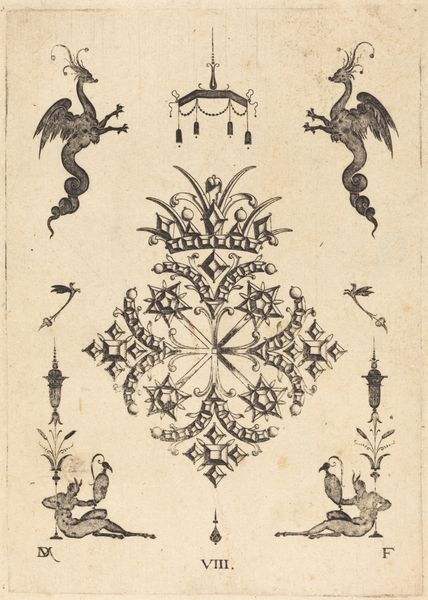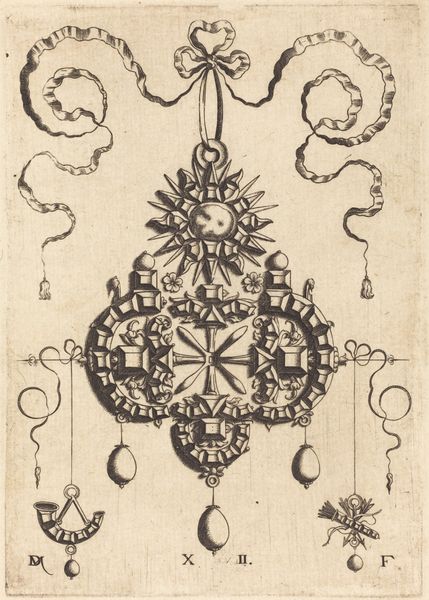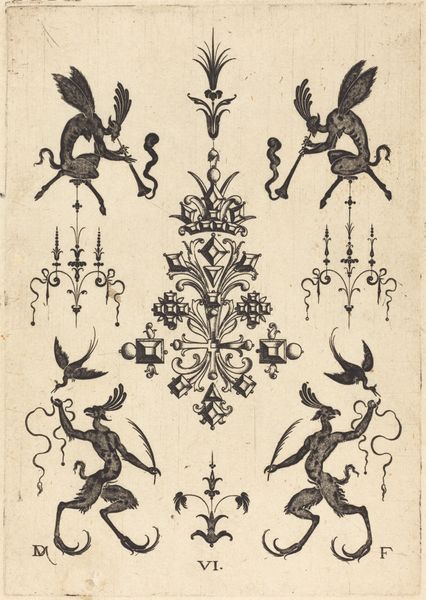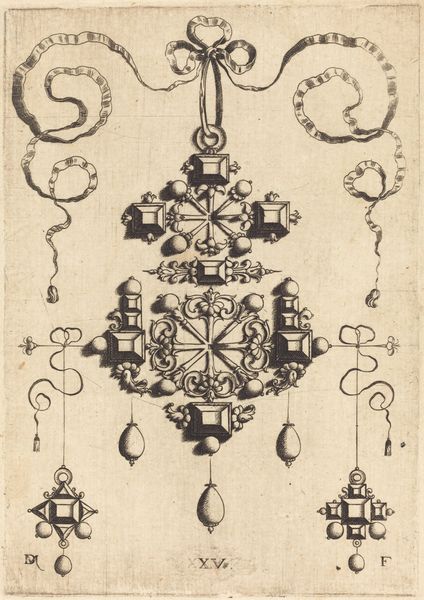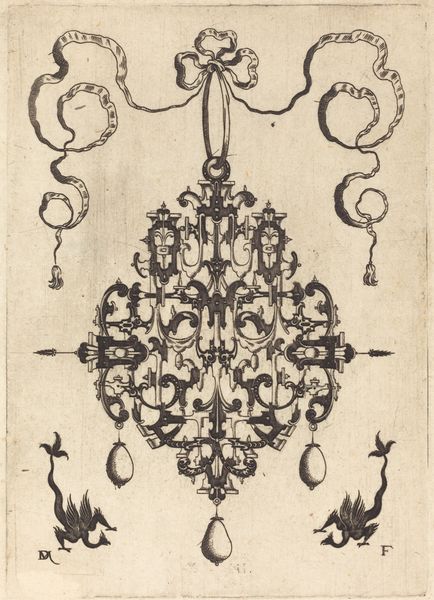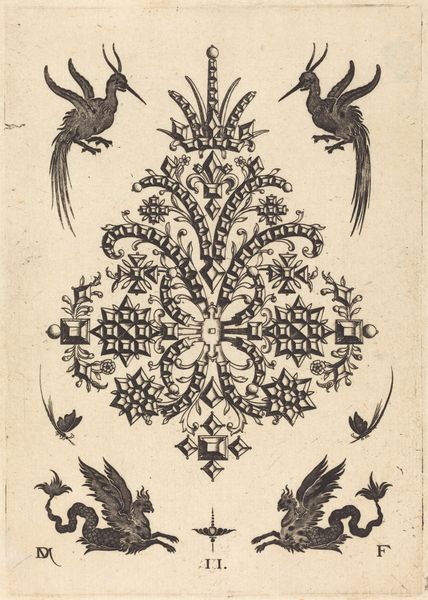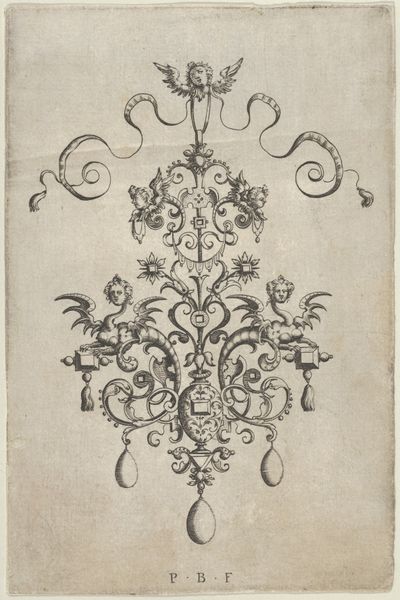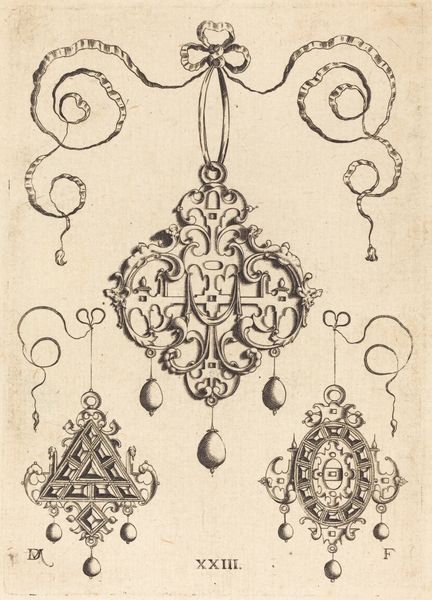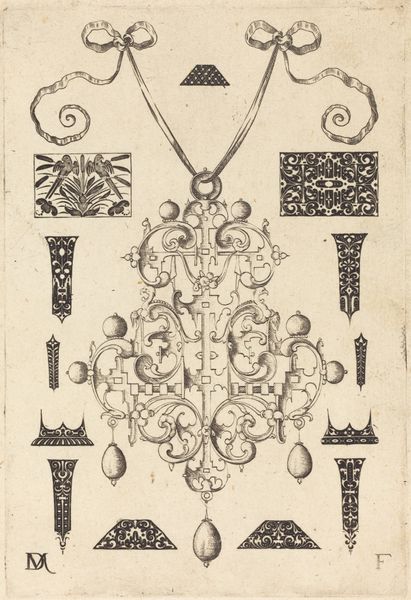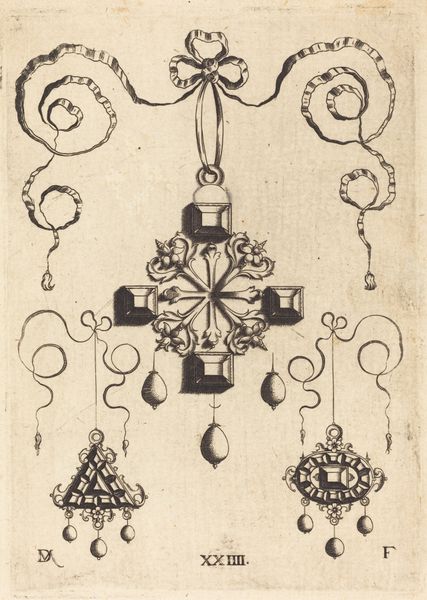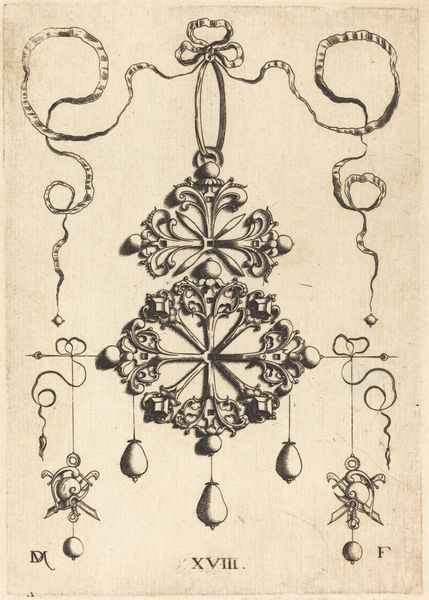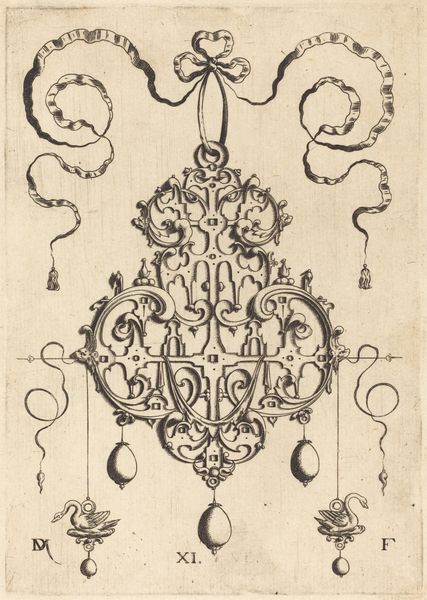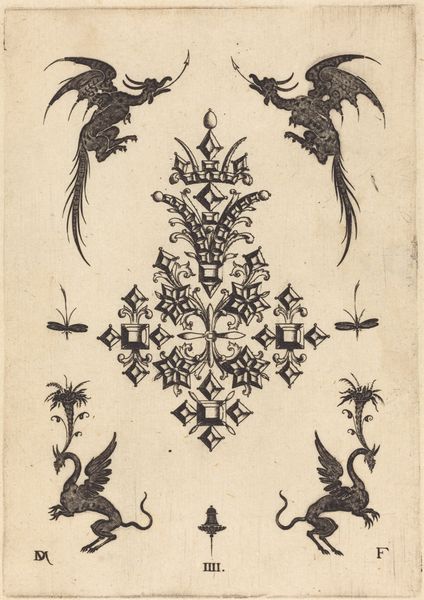
Three Brooches with Winged Snakes at Left and Right and Winged Griffins at Bottom 1596
0:00
0:00
#
pen drawing
# print
#
pen sketch
#
old engraving style
#
personal sketchbook
#
pen-ink sketch
#
ink colored
#
pen work
#
sketchbook drawing
#
sketchbook art
#
doodle art
Copyright: National Gallery of Art: CC0 1.0
Curator: Before us, we have "Three Brooches with Winged Snakes at Left and Right and Winged Griffins at Bottom," a print made by Daniel Mignot in 1596. The piece showcases precisely etched designs for jewelry. What’s your initial reaction to this striking image? Editor: The graphic quality is immediately apparent. It has such strong contrasts and a remarkable density of fine lines. I find myself lost in its patterns and the precision of execution, typical of the late 16th century. It feels very contained and controlled. Curator: It’s fascinating how Mignot, as a goldsmith and designer, uses the print medium here. These weren't meant as artworks in themselves but as templates, instruction manuals, and portable references for workshops. Consider how such a print enabled dissemination of style and technique. Editor: I notice the symmetry primarily; the formal structure reinforces that sense of crafted control and exactitude. Look at how he uses these griffins and winged snakes as mirroring structural supports flanking that central brooch. It’s very deliberate. Curator: Absolutely, the visual language speaks to the patronage system of the time, the status, and perhaps the symbolism imbued within such adornments. What narratives did the elite wish to embody, and how were workshops organized to supply this demand? This print becomes a historical artifact as much as a design document. Editor: It also leads me to consider Mignot's artistic decisions – the curves of the snakes counterpointing with geometric shapes of the brooches. And each brooch design incorporates crown-like elements, emphasizing luxury and status. This wasn't merely utilitarian but deliberately ornamental and visually powerful. Curator: Consider too, the collaborative aspect of its making. Mignot likely worked alongside engravers and printmakers who themselves possessed a high degree of skill. This brings attention to those laborers who transferred Mignot's designs to a repeatable medium. Editor: Indeed, that makes us question originality and authenticity when viewing pieces like these. Thank you. I'll now look at Mignot's work with new insight, seeing design, purpose, and making process with equal measure. Curator: A beautiful synthesis! Thinking about the materials, social context, and design—all are essential when decoding an object.
Comments
No comments
Be the first to comment and join the conversation on the ultimate creative platform.
